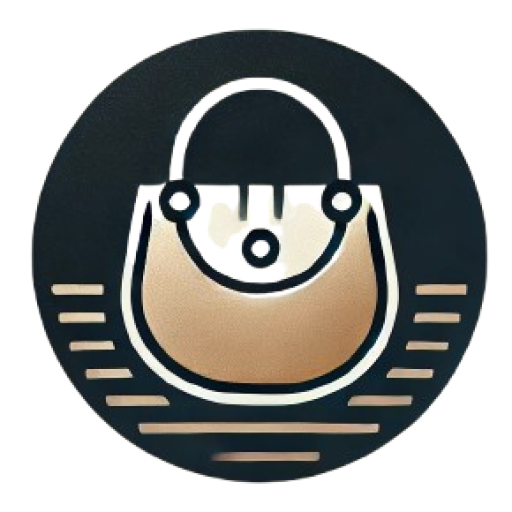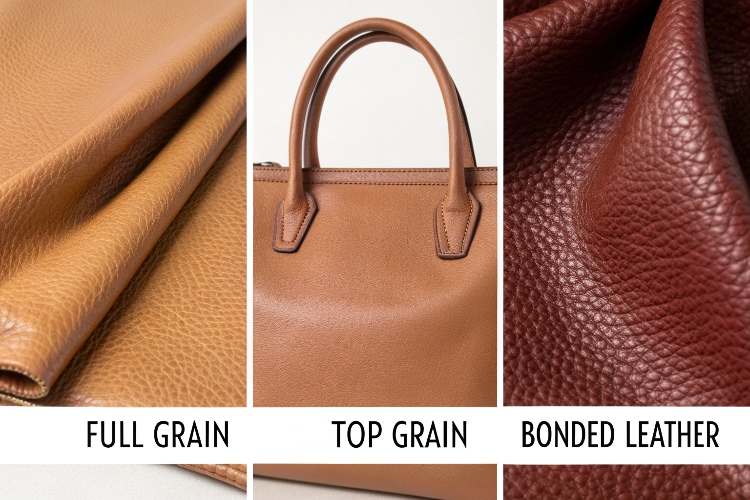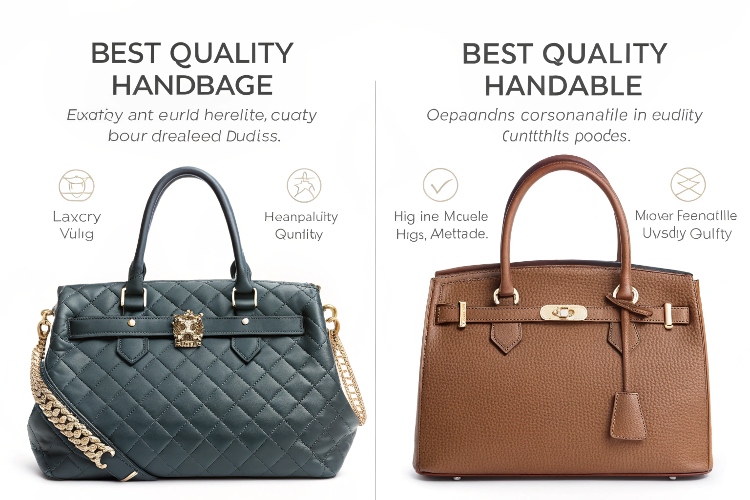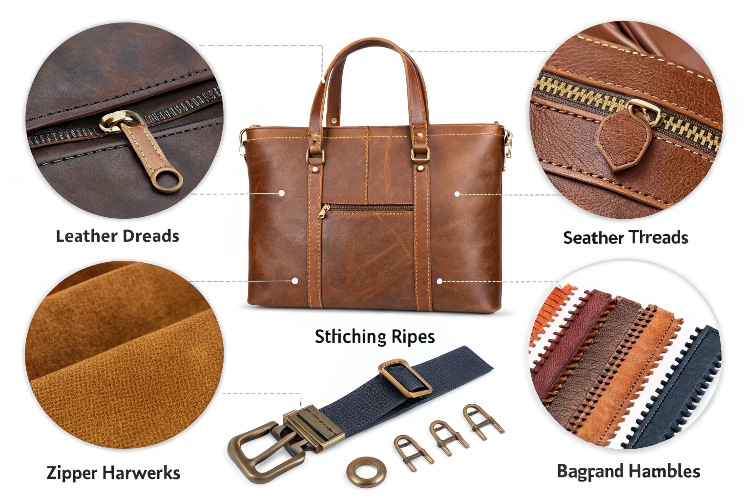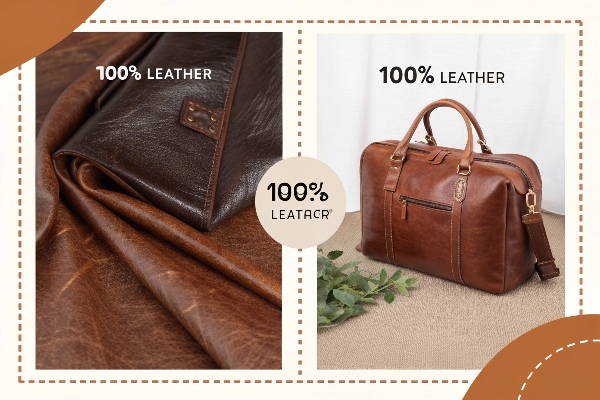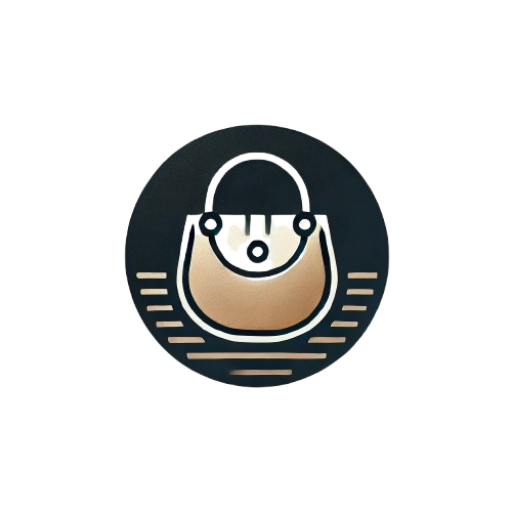To patent a handbag, first determine if your innovation is functional (utility patent) or aesthetic (design patent). Conduct a patent search on databases like USPTO or Espacenet to ensure uniqueness, then prepare detailed technical descriptions and 7+ angle CAD drawings (hand-drawn may be rejected). File a provisional patent (130intheU.S.)for12monthsof“PatentPending“status,followedbyafullapplicationwithin1yearofpublicdisclosure.Forglobalprotection,usetheHagueSystem(94countries).Combinewithtrademarkregistrationforlogos/colorsandavoiddisclosingdesignsbeforefiling—strictintheEU/China.TotalU.S.costsaverage3,500+.

Patent Types and Legal Requirements (Design Patent vs. Utility Patent, Legal Differences Across Countries)
1. Choose Design Patent or Utility Patent? First Identify Your “Innovation Point”
If you design a handbag with magnetic detachable straps, you may need a Design Patent to protect its appearance (e.g., shape, surface patterns). But if you develop a mechanical buckle that automatically adjusts strap length, you must apply for a Utility Patent as it involves functional innovation.
US Patent Office data shows about 87% of handbag-related patents are design patents. Examples include Kate Spade’s shell bag silhouette and LV’s monogram pattern protected by design patents. A key caveat: design patents do not protect colors! If your product relies on gradient dyeing techniques, consider combining trademark or copyright protection.
2. Legal Differences Between Countries Are More “Complicated” Than You Think
USA uses a “first-to-invent” system. While invention logs can theoretically prove originality, over 90% of handbag patents actually follow the “first-to-file” practice. Design patent applications require seven photos from different angles – hand-drawn sketches may get rejected.
EU offers two options: Registered Community Design (RCD) with certificates issued in 3 days (appearance only), or unregistered designs with 3 years of automatic protection. A real case: an Italian brand used RCD to block Zara’s copycat product within 48 hours of application.
Japan has a unique rule in its Design Law: if a handbag design includes “parts contacting the body” (e.g., anti-slip patterns on strap interiors), the purpose must be separately specified. Issey Miyake’s BAOBAO bag faced this issue in 2021, forcing patent scope modifications.
China allows “partial design” applications since 2021. Brands increasingly protect only iconic elements – Coach saved 60% costs in 2023 by patenting just its carriage logo buckle. Note: China permits public disclosure within 6 months before filing, unlike strict rules in US/Japan/Korea.
3. Cost Traps: What Seems Cheap May Cost More
US design patent official fees are ~$760, but total costs with legal fees exceed $3,500. EU RCD official fees cost only €350, but courts may demand “detailed originality proof” during infringement lawsuits – hidden costs could reach 10x official fees.
Japan Patent Office data shows handbag design patents take 11.2 months average review time – 3 months longer than electronics patents. Some examiners require “percentage differentiation from existing products”, making comparison chart preparation costs exceed application fees themselves.
Detailed Steps for Patent Application
1. Search Similar Patents: Check If Anyone Copied Your Homework
Don’t rush to pay for application fees. First search the patent database on the United States Patent and Trademark Office website (USPTO.gov) using keywords related to similar handbag designs. For example, if you designed a tote bag with a hidden power bank, search terms like “handbag with built-in power bank” or “tote bag charging compartment”.
A pro tip: Conduct reverse searching. Find your competitor’s patent numbers and check which patents they cited. Follow this trail to discover a series of related designs. The European Patent Office’s Espacenet database also works well. Switch between English + French + German keywords, as many designers register using different terms in different countries.
2. Document Preparation: Show Every Detail to the Patent Office
Prepare three core documents: Patent Specification (text description), Design Drawings (CAD or hand-drawn), and Claims Statement. Critical point: The specification shouldn’t just state “this bag looks nice”. Specify millimeter-level details. For example, if designing detachable straps, describe the buckle rotation angle and connection point stress parameters.
Drawings must use professional drafting software. USPTO explicitly rejects photo tracings. Real case: In 2019, Kate Spade’s wave-shaped clasp patent got rejected because drawings lacked shading lines, making examiners unable to see the 3D structure.
3. Submission Process: Pay Entry Fees and Prepare for Battle
Submit directly through USPTO’s EFS-Web system. The basic filing fee now costs $230 (discounted rate for small entities). But this is just the beginning – you’ll later pay $680 search fee and $800 examination fee. If examiners think your design clashes with Michael Kors’ 2017 patent, you’ll pay patent attorneys $400+/hour to write response briefs.
Little-known fact: Many designers first file Provisional Patents ($130 fee) to secure 12-month priority. During this period, you can display “Patent Pending” labels at trade shows to get orders, then convert to full patent after market validation.
Final reminder: Designs showcased at New York Fashion Week must file patent applications within 1 year of public disclosure. Miss this deadline and the patent office voids your claim. A Los Angeles designer learned this the hard way last year when runway photos became invalid evidence.
Patent Enforcement Strategies
Don’t Let Your Patent Become Worthless Paper
If you think obtaining a patent certificate means everything is settled, you’re likely in for trouble. In the U.S., over 60% of fashion category patent infringement cases ultimately lose not because the patent is invalid, but because rights holders failed to act promptly. Remember these three critical actions:
1. Use Google Reverse Image Search weekly to scan Amazon, Etsy, and AliExpress – catching counterfeits often faster than sending cease-and-desist letters
2. Register with the U.S. Customs’ e-Recordation system – Coach intercepted 23,000 counterfeit handbags at Los Angeles ports last year using this
3. Prepare an “infringement comparison chart” template placing patent drawings alongside counterfeit product images – judges in New York’s Southern District Court particularly favor this visual evidence
Brutally Effective Trap Tactics
A real-life example: An Italian brand discovered a Chinese factory copying their foldable bag patent. They sent designers disguised as Middle Eastern wholesalers to order 500 pieces. On delivery day, Milan’s financial crime police raided the warehouse, securing both evidence and eligibility for triple damages. This legally qualifies as Entrapment Defense, but requires:
– No active inducement of infringement (e.g., never say “I want the magnetic clasp design from XX model”)
– Use of notarizable communication channels throughout transactions (corporate email instead of WhatsApp)
Counterfeit Combat Cases
MetaBirkins’ Stumble
Hermès’ 2022 victory against virtual handbag NFTs taught physical brands a crucial lesson. While the case focused on trademark infringement, the judgment emphasized cross-dimensional protection of design patents – replicating Birkin’s 3D structure in the metaverse still constitutes patent infringement. This opens new possibilities: TikTok live-streamers selling fake bags might now face $1-per-view compensation calculations alongside fines.
Fast Fashion’s Achilles Heel
To combat giants like ZARA and SHEIN, target supply chains rather than courtrooms. A knockout case: British designer Anya Hindmarch raided a Bangladeshi factory with customs officials after finding her patented eco-tote copied. They seized not just products but molds and purchase orders – a tactic that cripples infringers’ restocking capabilities for 12+ months, proving deadlier than monetary damages.
Small Brands’ Counterattack Tactics
A Los Angeles indie designer executed this masterstroke: She dual-protected all new handbag lining patterns with copyright + design patents. When Forever21 copied them, she filed DMCA takedowns with Amazon instead of lawsuits. Copyright complaints process 5x faster than patent claims – achieving takedowns within 48 hours, while using Amazon’s Transparency Program to secure authentic products with unique barcodes.

Combination of Brand Trademarks and Patents (Strengthening Intellectual Property Protection Systems)
Why Use Trademarks and Patents Together?
Suppose you design an ultra-cool handbag with a unique brand logo (like LV’s monogram pattern) and an innovative magnetic locking system. If you only register the trademark, others can copy your lock design; if you only apply for a patent, competitors might sell the product under a different brand. Cases from the United States Patent and Trademark Office (USPTO) show that brands like Tory Burch use both trademarks (to protect logos) and design patents (to protect shapes/decorations) as a “dual safeguard”.
How to Implement This?
Step 1: Prioritize Patents: Mechanical structures or unique functions of the handbag (e.g., a detachable strap system) can apply for a utility patent, while visual designs (e.g., special stitching patterns) use a design patent. The USPTO requires patent content to remain absolutely confidential until the application is submitted, so don’t post on Instagram prematurely!
Step 2: Register Trademarks: Brand names, logos, and even specific color combinations (e.g., Hermès orange) can be registered. A 2021 ruling by the European Union Intellectual Property Office (EUIPO) involved a niche brand using a 3D trademark to register a specific metal clasp shape on handbags, successfully stopping copycats.
Real Case: Hermès’ “Combo Strategy”
Hermès’ Birkin bag is a classic example: design patents protect the bag’s shape, trademarks protect the “Birkin” name and engraved font, and even the orange packaging box is registered as a color trademark. In 2018, they used these rights to win a lawsuit against a Los Angeles counterfeiter, securing $1 million in damages.
Practical Advice from Lawyers
New York IP attorney Sarah Thompson (specializing in fashion) warns: Patent protection periods are limited (15 years for U.S. design patents), but trademarks can be renewed indefinitely. Major brands convert core design elements into brand identifiers, like Gucci’s double-G pattern, which started as a design patent and later became a trademark for long-term protection.
Pitfalls to Avoid: Common Mistakes
1. Disclosing designs before patent application—the U.S. allows a 1-year grace period, but Europe/China enforce absolute zero tolerance (posting images first ruins everything)
2. Vague trademark descriptions—avoid “golden accessories”; specify “12mm-diameter matte gold spherical clasps”
3. Ignoring e-commerce platforms—Amazon’s Brand Registry links patents and trademarks to automatically remove counterfeits
What to Do Now?
1. Spend $200 on a patent attorney for a feasibility search to verify your design’s uniqueness
2. For global sales, prioritize international design applications via the Hague System (covering 94 countries)
3. Use Google Image reverse search quarterly to monitor product images—catching pirates works better than lawyer letters
